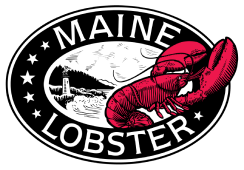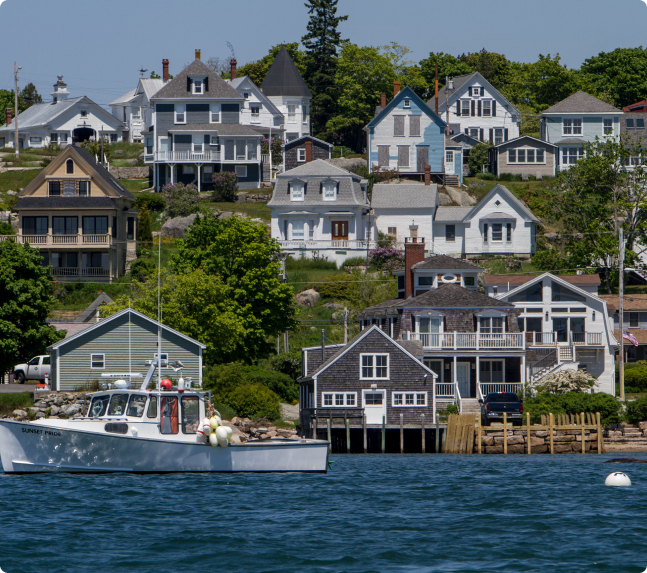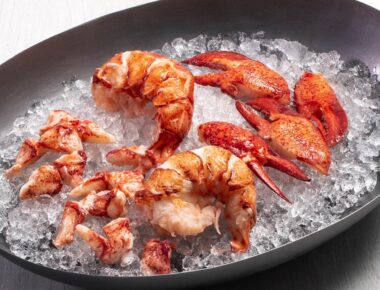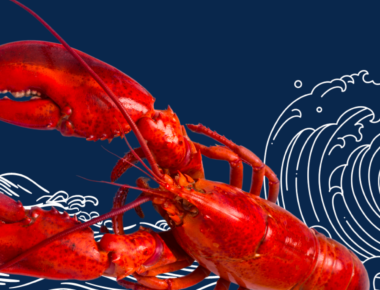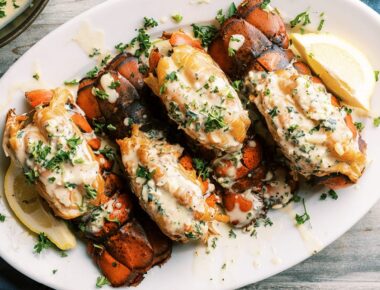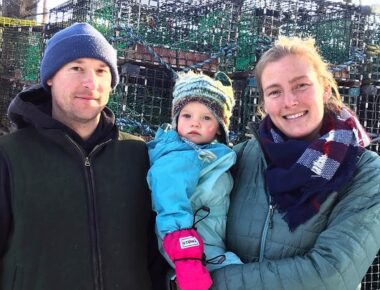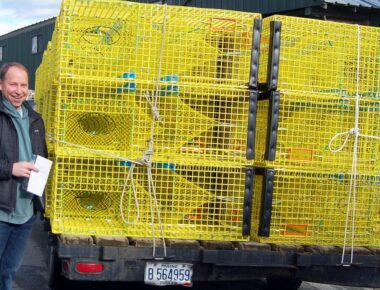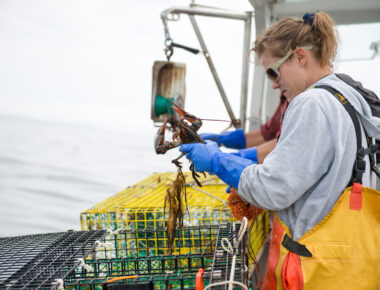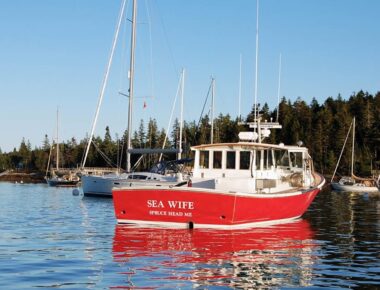“Just make sure you get to the ferry in plenty of time, you never know how that’s going to go.” This was advice from Karen Cooper, a 5th generation fisherman who lives on North Haven Island. I was going to deliver kelp seed to her – she had begun kelp farming a few years ago, which she did in the offseason when she wasn’t lobster fishing. North Haven sits in the middle of Penobscot Bay, roughly 12 miles northeast of Rockland and just north of Vinalhaven. The ferry runs from Rockland, frequently in the summer, when the ferry parking lot is typically jammed up with visitors – summer residents returned to their slice of Maine heaven and tourists hungry for an authentic Maine experience – but only three times per day in the long winter months.
The early December day was bitterly cold, but on the ferry ride across, I saw several lobster fishermen wrapping up for the day, cleaning their boats after a day of hauling. The high-pressure system that had brought the frigid temps also held off weather systems, giving fishermen a few “haul days” – which, despite the cold, they were keen to take advantage of. The ferry came up through the Fox Island Thoroughfare, the small channel that runs between North Haven and Vinalhaven. A modest cluster of fishing boats surrounded the two wharfs on the North Haven Side (Vinalhaven’s much larger fleet – the island is second only to Stonington for lobster landings – sits mostly in Carver’s Harbor and is not visible from the Thoroughfare). Karen greeted me at the ferry and directed me to her father’s boat yard, J.O. Brown and Son, one wharf over. We unloaded the kelp seed at the end of the wharf. Her father, Foy, was there, along with her brother, also named Foy. The three conferred on logistics for the following day, surrounded by hauled out fishing boats, and the cluster of buildings which made up the yard.
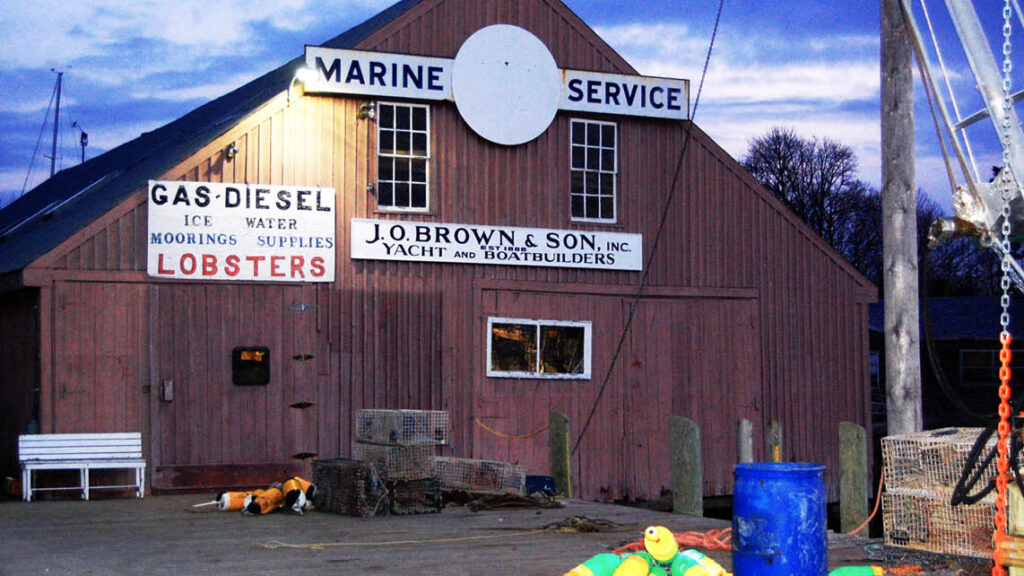
With the morning plan in place, Karen and I set off – she had offered to give me the ‘grand tour’ of the island. Karen’s family had been on the island for generations. Her great, great, great grandfather had rented a fish house on the Thoroughfare and started building boats. That small fish house, over generations, became J.O Brown & Son (or Brown’s as its colloquially known). Karin’s husband’s family has a multi generation history on the island too, though his family is in construction. “When we decided to get married, I said it would be smarter to put a notice up with a list of people we didn’t want to come to the wedding, since that would be an easier list to make,” she said with a smile. As we drove, Karen narrated the sights, “My husband is working on that house there, and up where we’re headed is the best place to catch the sunset, hopefully we won’t miss it.” The population of North Haven dwindles down to just 300(ish) in the winter, swelling in the summer to 3 to 4 times that number. In the winter, the only thing open regularly on the island is the general store (“it’s only open until 7,” Karen noted as we passed by.)
Karen has been lobster-fishing her whole life, now she fishes 200 traps in the summer. “I just go by myself, I like fishing up in close in the nooks and crannies,” she reflected. “When I was 7 or 8, I went with my dad, just for fun. I probably worked but it just felt like fun to me.” In the 80s when lobstering really picked up, Karen decided to start hauling on her own.
“I started out of my Dad’s skiff hauling 30 traps by hand. I had sore arms and it was hard work but when I would haul a trap and see what was inside…. that is what makes me love my job!”
Like her father, and her brother, she fishes out of a wooden boat named Title 9. “Well it’s got a glass bottom.” And she related how, one time when she was away with her family for the weekend to watch the Blue Angels, she had called her dad to ask a favor; could he please feed her dogs? As Karen related, the story went like this:
“I’m already doing you a favor.”
“What’s that?”
“Your boat turned turtle and I’m hauling it up.”
“After that he told me we should glass it (put fiberglass over the wood) but I refused, I like a wooden boat. In the end, we decided to glass the bottom, so now I have the look of a wooden boat, but the security of a glass bottom.”
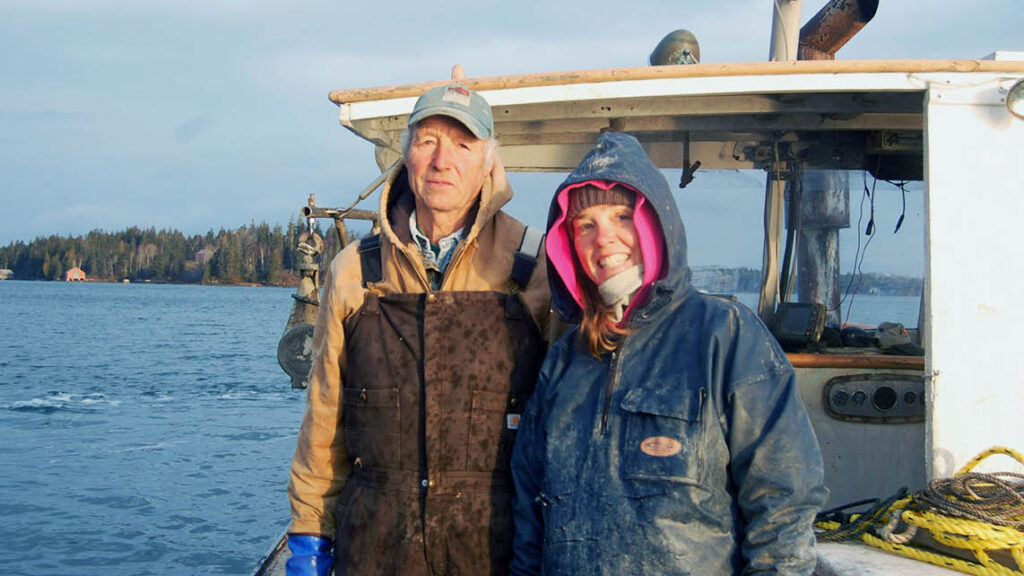
The next morning, we headed out in Karen’s father’s lobster boat. “My Dad,” she told to me, “he’s transported a lot of people in this boat: pregnant ladies, people who are sick, they all need to get to the mainland, and my Dad, he just does it.” This community mindedness was born of necessity and was so much a part of island life it was second nature. Just make do and get it done; there wasn’t any other option if you’re on an island. That morning, Karen had brought her son Peyton, a senior in high school, to help for the morning of kelp seeding. “They just have half days Fridays,” she related, “so parents can take them to off-island appointments, doctors or dentists.” Karin’s daughter, Kennedy, who was scallop fishing on Mt. Dessert, would be home for the weekend a bit later.
After a spell, Karen’s brother Foy picked me up in a skiff to get me back in time for the ferry. He also ran the skiff back and forth from the boat yard to Vinalhaven, a quasi-community service/business ($5 per ride). He sluffed off my offer to pay, “I’ll put it on Karin’s tab,” he said with a knowing grin.
Back aboard the ferry and headed to the mainland, I reflected on a something Karin had shared. “The longest I’ve ever been off the island,” she had told me, “was when I biked cross country. That was two months. I don’t mind leaving, but I’m always so glad to come home.” Steaming out of the Thoroughfare, headed West towards mainland and looking back on the small cluster of fishing boats that had greeted me less than 24 hours before, I could see why.
